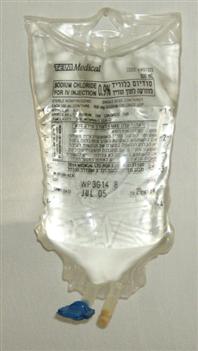Posters here have raised all sorts of issues - but I do not remember this specific one having been discussed. And it shows that, despite the 'obviousness' some of us might feel about this, it obviously hasn't been that obvious to the medical teams involved. Given the huge effort they put in and their incredible achievements, we need to ask why it has apparently only just surfaced in this way?
Curr Opin Pediatr. 2012 Jan 21. [Epub ahead of print]
Clinical importance of hypothyroxinemia in the preterm infant and a discussion of treatment concerns.
La Gamma EF, Paneth N.
Source
aRegional Neonatal Intensive Care Unit, Maria Fareri Children's Hospital at Westchester Medical Center bDivision of Newborn Medicine, Department of Pediatrics, Biochemistry & Molecular Biology, New York Medical College, New York, New York cDepartments of Epidemiology and Pediatrics & Human Development, Michigan State University, East Lansing, Michigan, USA.
Abstract
PURPOSE OF REVIEW:
Survival for the extremely low gestational age neonate (ELGAN; 24-28 weeks) has risen to more than 80%. This extraordinary achievement is tempered by the persistence of cognitive delays and cerebral palsy (CP) affecting nearly one in eight survivors, and requiring subsequent rehabilitative services. A major priority in newborn medicine must be to translate the gains in survival achieved over the past 40 years into gains in healthy survival without the current high frequency of impairments.
RECENT FINDINGS:
Transient hypothyroxinemia in ELGANs is strongly associated with lower IQ scores, behavioral abnormalities and CP. Limited evidence suggests the possibility of a benefit from hormone replacement therapy, but the optimal trial has yet to be conducted. A continuous infusion of 4?µg/kg per day thyroxine for 42 days can safely correct transient hypothyroxinemia without markedly lowering thyroid stimulating hormone levels, thus creating a biochemical euthyroid state. Whether this treatment will make an impact on long-term outcomes is not yet known.
SUMMARY:
With 25?000 neonates born in less than 28 weeks each year in the USA, the economic impact of the very high rates of cognitive disabilities and related neurological dysfunction in survivors is substantial. The lifetime direct and indirect costs of CP are estimated at US$1 million per person and the costs of mental retardation are even higher. If reversal of transient hypothyroxinemia proves effective in reducing the risks of CP or mental retardation in ELGANs by 30%, we estimate an overall saving of US$ 3 billion per year. There is a pressing need for a phase III trial of thyroid hormone that is of sufficient duration and size to determine whether a clinically important reduction in risk of developmental impairments in ELGANs can be achieved.
PMID:
22273635
[PubMed - as supplied by publisher]
ncbi.nlm.nih.gov/pubmed/222...
Rod
